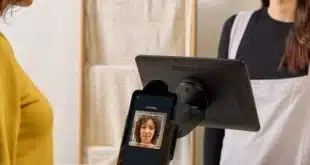Members of Amazon.com Inc.’s Prime membership service are enthusiastic users of the e-retail giant’s payments service, which it makes available to other merchants. In fact, some 50% of Amazon Pay’s users belong to Prime, according to Amazon Pay vice president Patrick Gauthier, who spoke with Digital Transactions News Tuesday at ShopTalk, a commerce conference in Las Vegas.
“We pay attention to consumers who use Amazon Pay,” Gauthier says. That kind of knowledge is helping the company prepare merchants not just for online sales, but for transactions in physical stores, a venue the Seattle-based e-commerce giant has just begun to penetrate.
Amazon’s Amazon Pay service enables consumers who have stored payment card credentials in their Amazon.com accounts to use them to pay for merchandise with merchants that accept Amazon payments. One such merchant is Southwest Airlines Inc., which in February began offering Pay with Amazon (as Amazon Pay is labeled for retailers) as an option for its onboard entertainment service. In April, Amazon Pay was used for the first-ever in-store payment at a Moda Operandi Inc., New York women’s apparel retailer.
While any merchant using Amazon Pay retains ownership of all the transaction data, Amazon culls the non-transaction data generated by Amazon users, Gauthier says. So far, Amazon Pay users tend to be homeowners and share characteristics of early adopters of technology, he says, adding that consumers in more than 170 countries use the service.
Gauthier, as one might suspect, says services like Pay with Amazon will become more common as the retail shopping experience changes.
Traditional retail that drives traffic to stores via sales is being reinvented, he says. “It will be experiential again.” The first steps of that, where consumers shop online, load an item to their cart, and walk into a store to purchase the item, are beginning to happen. What Gauthier suggests can develop is that a store employee takes note—via an app—of when that customer arrives and prepares the items for the customer.
That’s how it played out at Moda Operandi. The sales clerk knew the customer was in the store because Bluetooth low energy beacons in the store recognized when the customer’s smart phone was near, resulting in a notification in the retailer’s app. Because Amazon passed along the customer’s shopping data, the employee knew which items interested the shopper, Gauthier says.
This is the antithesis of the contemporary shopping experience. “Checkout, frankly, is a commodity,” Gauthier says. “What’s not a commodity is check-in. What’s not a commodity is trust. What’s not a commodity is personalization. That’s what we’re interested in enabling merchants to do.”
That’ll mean an expansion of Amazon Payments technology. “You can expect us to grow really fast,” Gauthier says.
Amazon Payments will continue to grow beyond the Internet. “Amazon knows the connected life is not just connected through the Web and not just through mobile,” he says. A few years ago, mobile first was the watchword with retailers, but that is evolving into app first, Gauthier says. “We’re entering the age beyond the browser,” he adds.




